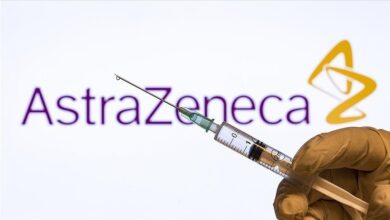
The health authorities in Germany reported 17,214 new corona infections to the Robert Koch Institute (RKI) within one day. This emerges from information from the RKI from the morning. On Wednesday a week ago, the number of new infections reported was 14,964 – that was almost twice as many as on the Wednesday of the week before.
The number of new infections now reported is below the peak values of the past week. On Saturday, the RKI announced the record value of 19,059 new infections registered within one day. That was the highest number in Germany since the beginning of the pandemic.
According to the RKI, a total of 577,593 people across Germany have been infected with Sars-CoV-2 (as of November 4th, 00:00) The number of deaths related to the virus rose 151 by Wednesday to a total of 10,812. The RKI estimated on Tuesday that around 371,500 people have now recovered – the information for Wednesday was initially missing.
There was a technical problem with the RKI dashboard in the morning, the RKI initially only made the current information available here.
Reproduction number again below one
It is also important to look at the corona infection rate: the number of reproductions, or R value for short, fell slightly according to the RKI – to just under one. This means that an infected person infects just under another person on average. The R-value depicts the infection rate about one and a half weeks beforehand.
In addition, the RKI gives a so-called seven-day R in its management report. The value relates to a longer period and is therefore less subject to daily fluctuations. According to RKI estimates, this value was 0.98 on Tuesday (previous day: 1.04). It shows the infection process from eight to 16 days ago.
RKI Vice-Boss Lars Schaade had previously stated that the rate would have to be kept well below one for a long time. The goal could be about a size of 0.7. “Then we are back in an area that we can control.”
Bottlenecks in clinics and laboratories
Since Monday, public life in Germany has shut down significantly – initially for four weeks. The aim is to reduce the number of new infections in order to relieve hospitals, laboratories and health authorities. There are already bottlenecks in these areas. Intensive care units fear that they will not have enough beds and nurses for the expected increase in patient numbers. The number of Covid 19 intensive care patients has already risen sharply – from 362 on October 1 to 2243.
The laboratories are also reaching their limits. For the first time nationwide, the test capacity has been fully exhausted, said the Association of Accredited Laboratories in Medicine, based on data from 162 laboratories. In the meantime, “the red light has been run over”. In the event of further flooding with samples or a possible equipment or staff failure, there is a threat of a collapse in the supply. It is necessary to concentrate the capacity of 1.4 million tests per week on urgent cases. Too many PCR tests would still be done without symptoms.
New test criteria
The RKI therefore adjusted the recommendations to doctors on the test criteria – factors such as symptoms, belonging to a risk group and the likelihood of having been exposed to the coronavirus.
The approximately 400 health authorities nationwide are also at their limit or even beyond. More and more authorities are no longer able to comprehensively trace and break infection chains. However, contact tracking is considered central to fighting pandemics.
The corona situation is also worsening in Europe. Due to the consistently high numbers of new infections, many neighboring countries of Germany imposed strict restrictions. Here is an overview:


